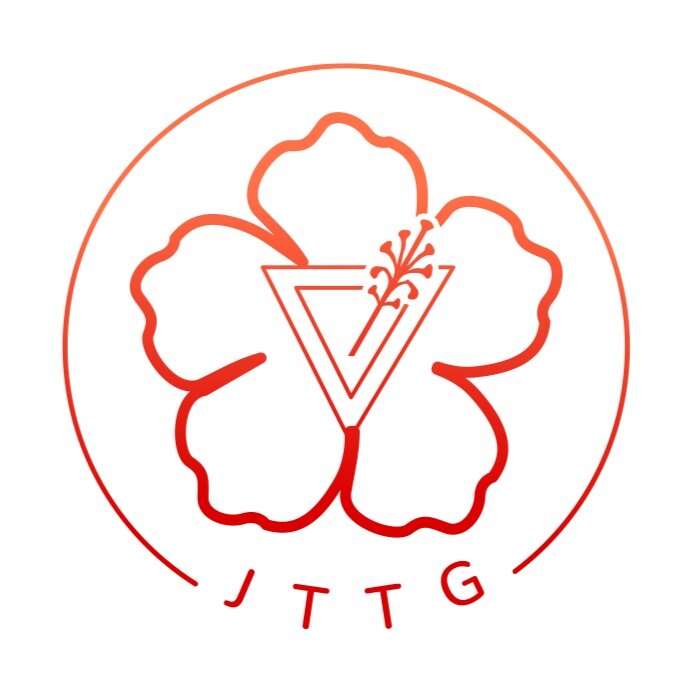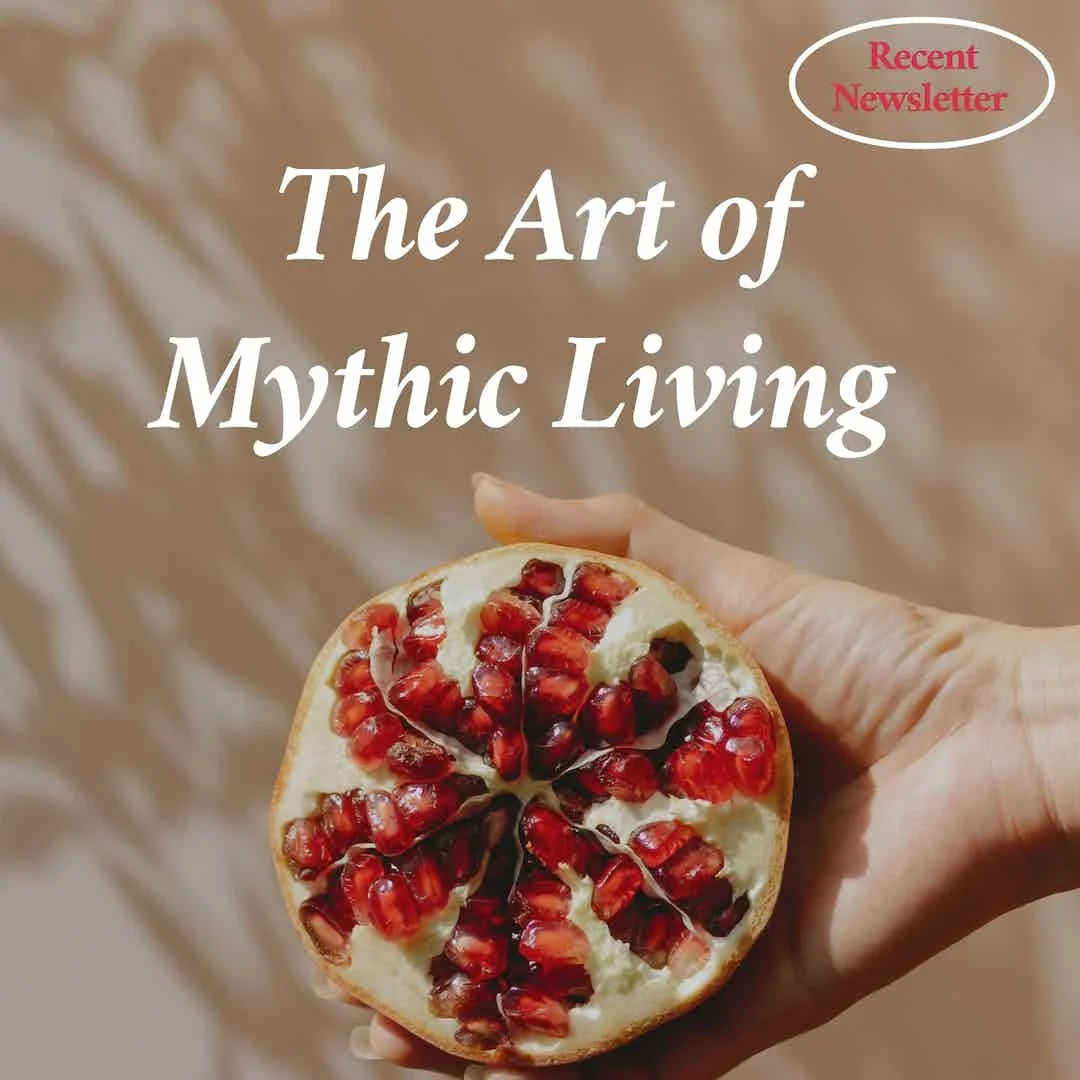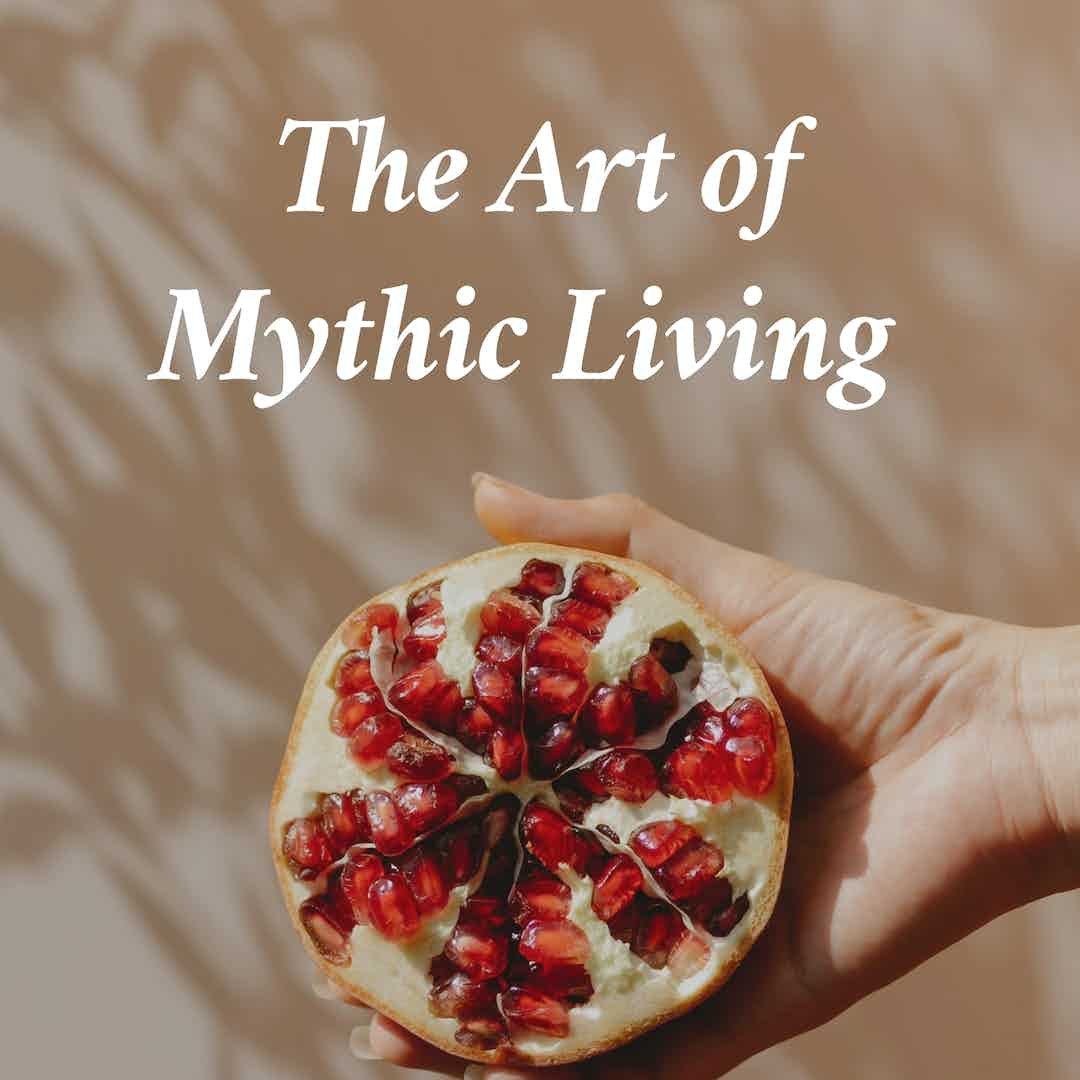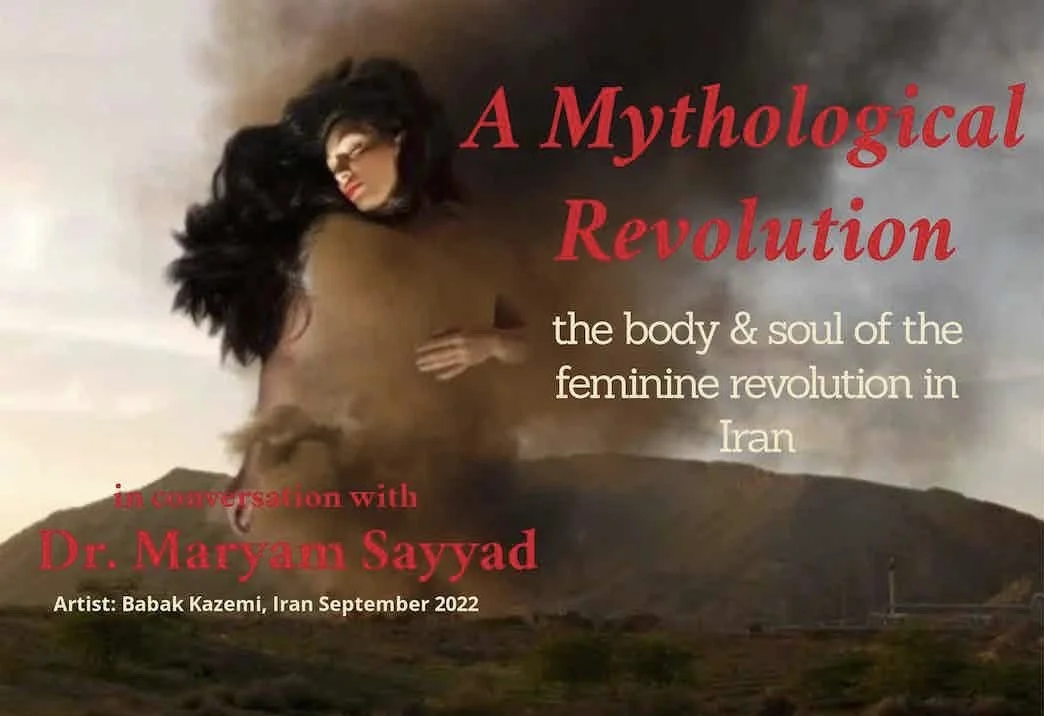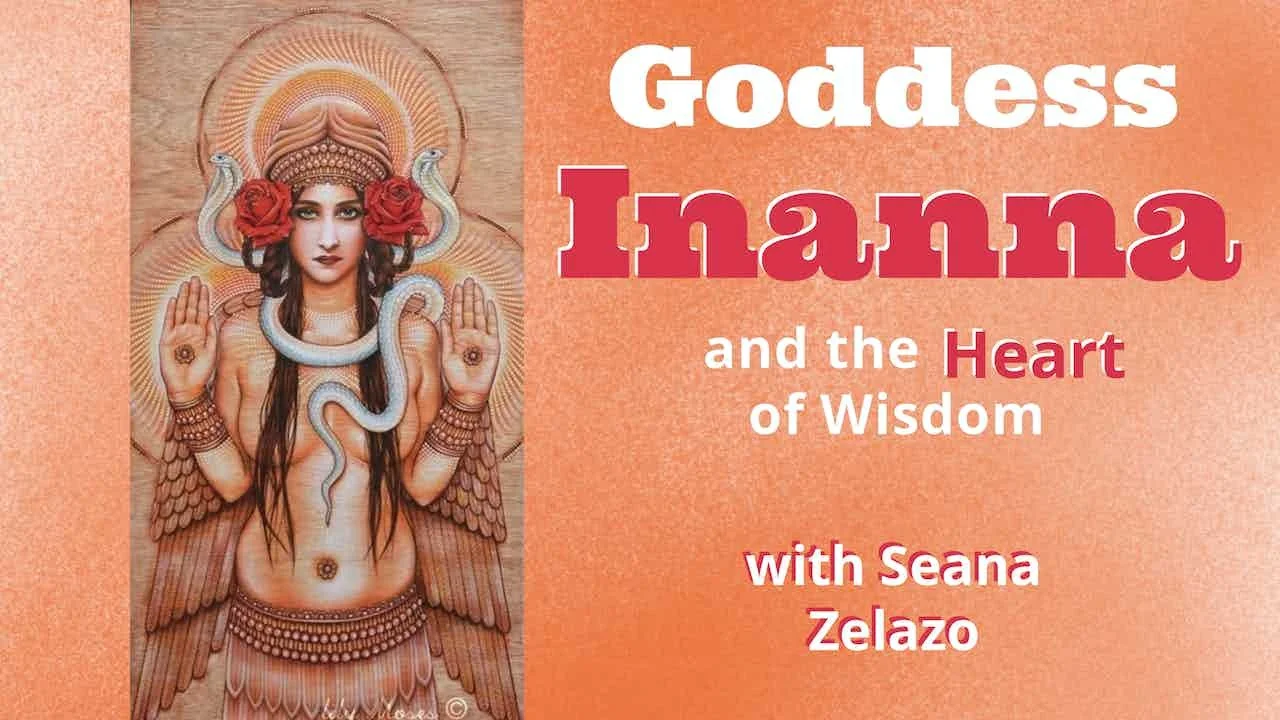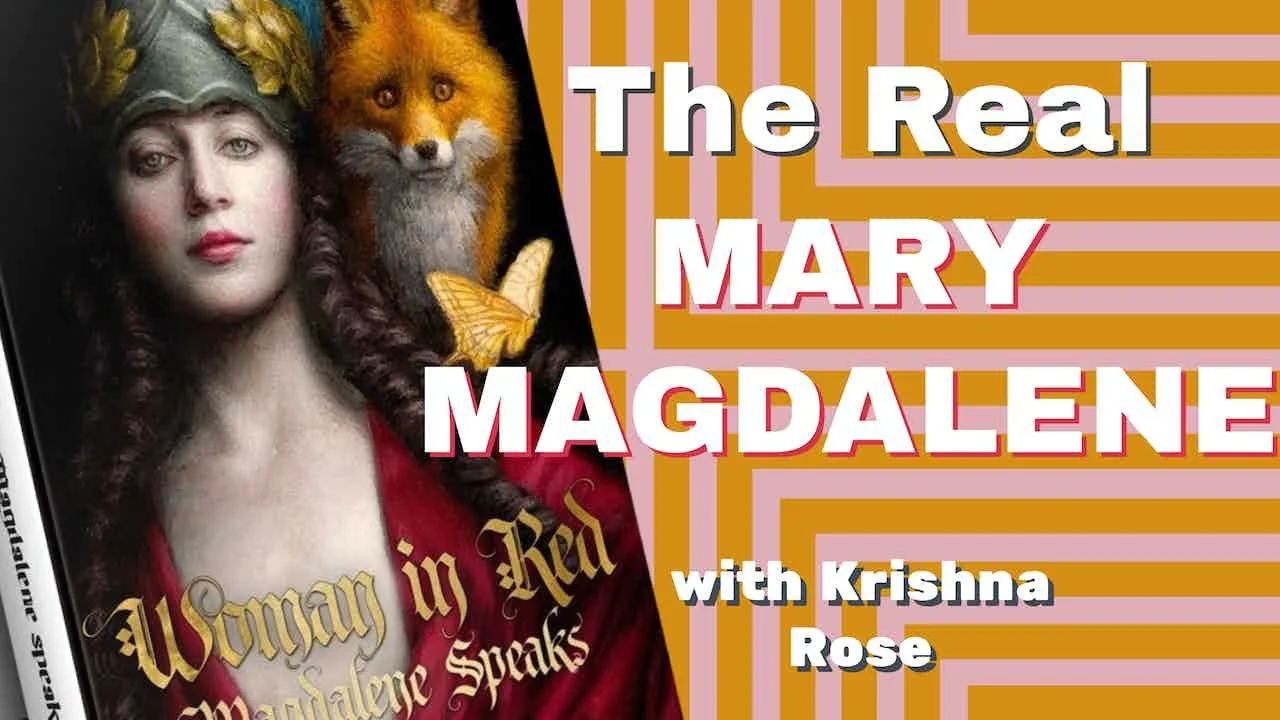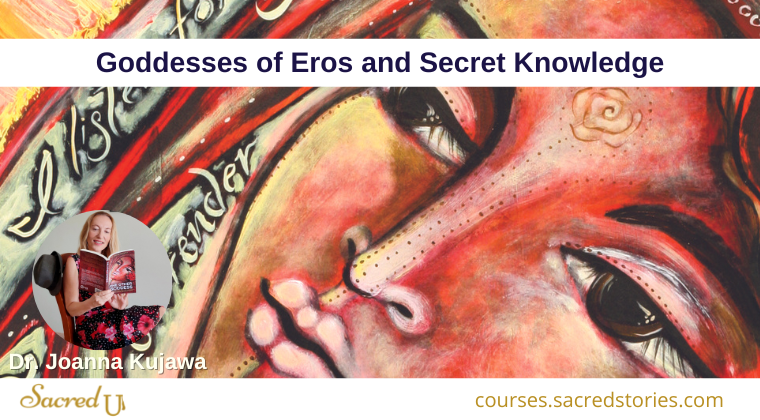How Mythical Living can transform your life! (& other tales from Greece)
IN THIS NEWSLETTER:
Annalisa’s Monthly Letter
RECENT Journey to the Goddess TV Episodes
Goddess News
What I’m Reading
Feature: Women to Follow
Upcoming Interviews
How a Greek Pomegranate Taught Me the Art of Mythic Living
As far as this outsider-looking-in can tell, there is nothing more uniquely Greek during the holiday season than Christmas themed pomegranate ornaments, amulets, and table toppers. Simply put, pomegranates are so ubiquitous in Greece during this time of year that they might as well be synonymous with Christmas! Adding to the Christmas spirit, the fancy decorative pomegranates even come with an Evil Eye at their center. Nothing quite evokes the warm and fuzzy feeling of Christmas like the omnipresent gaze of the Evil Eye!
All jokes aside, both the pomegranate and the Evil Eye are symbols that go back to Ancient Greece and very generally represent protection and well-being. Now, you can imagine that the mythologist in me was intrigued. I was dying to know why these ancient symbols play such an important role in the modern Greek Christmas tradition!
I began this mythic investigation by canvasing several Greeks about the festive meaning of the pomegranate—three, to be exact—and was told that they represent abundance and well-being. In fact, their New Year’s tradition consists of throwing a pomegranate at the threshold of the door in anticipation of the many seeds that will fly out of the fruit. The seeds are said to represent abundance. Therefore, the more seeds liberated from the pomegranate seems to represent an omen of good luck and wellbeing for the coming year. What a mythic way to usher in the New Year!
This might be a good time to let you know that I have an obsession with the pomegranate, no doubt triggered by their appearance in many Near Eastern mythologies. So, of course, when I hosted an ex-pat American Thanksgiving in my tiny, but Athenian-chic Airbnb apartment, I made sure to prepare my signature Thanksgiving dish: a pomegranate delicacy that I affectionately call, Persephone’s Delight. However, this year, something felt different in the preparation of this dish. As I dug my fingers into its gritty, white flesh and gently plucked the seeds out from their clusters, I watched transfixed as the ruby red juices raced down my fingertips, making little rivers between my fingers that then trickled down my hands. Suddenly, it hit me: I was preparing Persephone’s Delight in Greece, on the land of the culture that originated the myth of Persephone and her pomegranate seeds! I had entered mythic time!
The pomegranate was no longer simply a tasty fruit that I associated with a Greek goddess; it became a gateway into the ancient past and a culture that mythologized the pomegranate as a symbol of life, death, fertility, the afterlife, abundance, and prosperity. In the story of Persephone’s abduction to the Underworld by Hades, the pomegranate plays the key moment in a (very problematic) story that is commonly believed to mythologize fertility and the agricultural cycle. Hades offers Persephone pomegranate seeds, she eats them, and is henceforth destined to return to the Underworld as his bride for several months every year. Having entered the realm of mythic time, I wanted to understand why Hades gives Persephone pomegranate seeds when he could give her any other number of mythically important fruits, such as figs, olive oil, or honey? Why does the pomegranate play such an important role in this story? Does it have any connection to the modern Greek Christmas tradition?
So, like one does, I began a deep dive into all the academic literature I could find and discovered that the pomegranate represents much more than plant fertility in this story. In fact, I’ve come to believe that the pomegranate in this myth represents a complete symbol for the cosmic feminine and masculine powers of creation! How so, you may ask? Well, this newsletter is the early beginnings of an article I’ll be writing on the meaning of the pomegranate in the Persephone-Hades myth. You’ll just have to wait for the full story—with bated breath, I’m sure!
What’s the takeaway from my adventures with the Greek pomegranate? On the one hand, my curiosity is now satiated. I have identified for myself a clear link between the contemporary and ancient symbolic meanings attributed to the pomegranate. Not only is there a symbolic link, but there’s an actual medicinal link, too. Modern science has caught up with the ancients and conducted innumerable studies that have shown the massive curative and preventative health benefits of this fruit—some of which are indeed related to increased fertility! But truly, the greatest takeaway is an awareness of how to live mythically.
What does it mean to live mythically? Canvas any number of mythologists and you’d probably get just as many answers as there are mythologists to this question. When I engage with the Living Myth, I find that it re-enchants the world. In other words, the world around and within in me comes alive. In this vein, every living thing from the tiniest organism to the vastest celestial body, every interaction, and every choice has meaning, purpose, and intrinsic value. Living mythically enables me to connect with the limitless patterns of human experiences and, in that space, discover the transpersonal meanings within my personal experiences. The barriers between time and space become preamble and there is a resonance in which, even if only for a nanosecond, I can feel myself interconnected with all Life (past, present, and future). Therefore, engaging the Living Myth is the secret to Living Mythically.
Since leaving Greece (for now), I have discovered the art of mythic living, at least for me. Sometimes distance is necessary because it brings clarity. The modern Greek holiday tradition taught me that the pomegranate IS the LIVING MYTH. Not just for me, but for you, too! I believe that each time you partake of a pomegranate, whether you are aware of it or not, you too, are stepping into a Living Myth. May you step into the New Year with wisdom, grace, and a little bit of enchantment.
Special thanks to the friends and colleagues who have, for months, engaged with me in a conversation on the meaning of mythic living.
🌺Annalisa, PhD
Recent Episodes:
The Feminine Divine is RISING. She is showing her FIERCE form in the women-led revolution happening NOW in Iran.
What are the mythological underpinnings of this revolution? How does this indicate the return of the Divine Feminine in the world at large? How can we best support this women-led revolution?
Find out the answers to these question and more with Iranian born, LA based scholar, writer, lecturer, & story consultant, Dr. Maryam Sayyad.
In this episode, Maryam gives an in-depth visual presentation that is followed by a Q&A panel discussion with myself and additional guest, Dr. Odette Springer.
Have you ever felt the desire to Roar Like a Goddess? I am thrilled to announce my latest interview with world-renowned spiritual teacher, visionary author, and modern mystic, Acharya Shunya.
Join us to learn how to end toxic relationships, unlock the secret to finding your authentic voice, & unleash your inner goddess!
Join me as I discuss the mythic and archetypal goddess Inanna with Seana Zalazo, psychotherapist, intuitive channel, spiritual coach, and author of, “The Way of Inanna: A Heroine’s Guide to Living Unapologetically.”
I thoroughly enjoyed this discussion on Inanna one of the most dynamic and powerful and sensual goddesses in the world! She is the ultimate unapologetic heroine.
Seana’s book takes us to the heart of Inanna’s mysteries. She shows us how to work with Inanna and her myths as a path to wholeness and personal empowerment.
Who was Mary Magdalene?
What was her role in the Christian story?
What was it like to be the beloved of one of the most important figures in history?
Watch my interview with modern mystic and author of “Woman in Red: Magdalene Speaks”, Krishna Rose, to learn more!
Goddess News
Podcast feature!
Annalisa is featured on The Unapologetic Heroine podcast, with hostess, Seana Zelazo. Seana and I have a deliciously in-depth conversation about the goddess Inanna, female sensuality and power, and, of course, goddess and menstrual-themed performance art by yours truly! Listen to our conversation here: https://sacredstories.com/performance-art-as-ritualwith-dr-annalisa-derr/
Dr. Joanna’s New course!
Dr. Joanna has a brand new course on the Goddesses of Eros and Secret Knowledge. “Reinterpret what you once believed to be true and journey into the fascinating histories and archetypal energies of the Goddesses of Eros and Secret Knowledge in this one of a kind five-part course offered by Dr. Joanna Kujawa at Sacred U.” Click here to learn more!
Call for papers!
The Association for the Study of Mythology is now accepting presentation proposals for their 2023 Symposium, “Waters of Life: Exploring Mythos, Divinity, Beings, and Ecology.” Deadline for submission is: January 15th, 2023. Learn more: https://womenandmyth.org/2023-aswm-conference/
ASWM Conference is May 5th - 6th, 2023
Call for papers!
The Fates and Graces Mythologium is now accepting presentation proposals for their 2023 conference, “Myth and the Heart.” Deadline for submissions is February, 28th 2023. Learn More: https://mythologiumconference.com/
Mythologium Conference is July 28th - 30th, 2023
What I’m Reading
The Jewish Bride
“The Jewish Bride” is a novel by Judit Neurink that imagines into the lived experience of an Iraqi Jewish community, as told through the eyes of one woman. Through the author’s eyes, we experience the potent interior world of a young Iraqi woman; one that is filled with passions, desires, ambition, and a curiosity for the world beyond the borders of her house. In the end, I am reminded that no matter how culturally far apart my life seems to be from that of the lead character, there is indeed an invisible thread that connects us as women.
Feature: Women to Follow
Banafsheh Sayyad
is a sacred dancer, teacher, and founder of Dance of Oneness.
Banafsheh Sayyad
Inspired by a number of dance traditions, Banafsheh’s dance and teachings offer a powerful portal into the sacred that transcends a particular tradition. Learn more about her work: https://danceofoneness.org
(“In the Fire of Grace.” Photo: Mehri Sahihi.)
Upcoming Interviews:
Shamanic & Ancestral Healer & Author
Speaker, Teacher, & Scholar and practitioner in Indigenous contemplative science.
